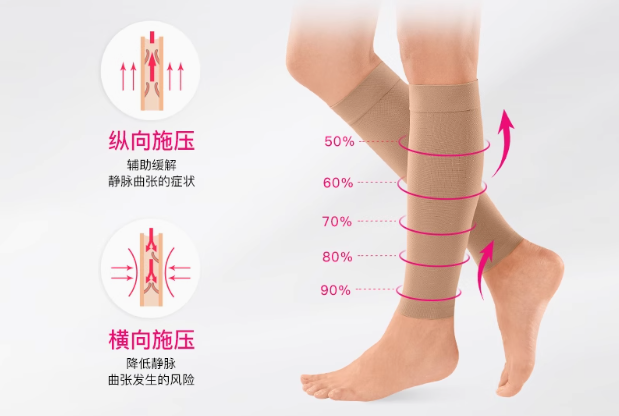Unsold sock inventory clogs shelves, and customer returns hurt margins. I’ve learned choosing the right grip sock features is the key to preventing this pain and driving sales.
Retailers prioritize durable, non-slip grip patterns, high-quality breathable materials, targeted cushioning for comfort, and a wide array of modern colors and styles that meet market demand.

I've spent years working with purchasing managers like you, helping them select products that don't just sit on the shelf but fly off it. We've learned together what separates a best-seller from a bargain-bin failure. Let's break down exactly what to look for, feature by feature.
What's So Good About Grip Socks?
Regular socks are just a commodity with thin profit margins. They lack a strong selling point. Grip socks solve a real user problem, creating value and real demand.
Grip socks provide tangible benefits like improved stability, reduced friction, and enhanced comfort during activities. This functional advantage makes them a premium product that customers actively seek out.
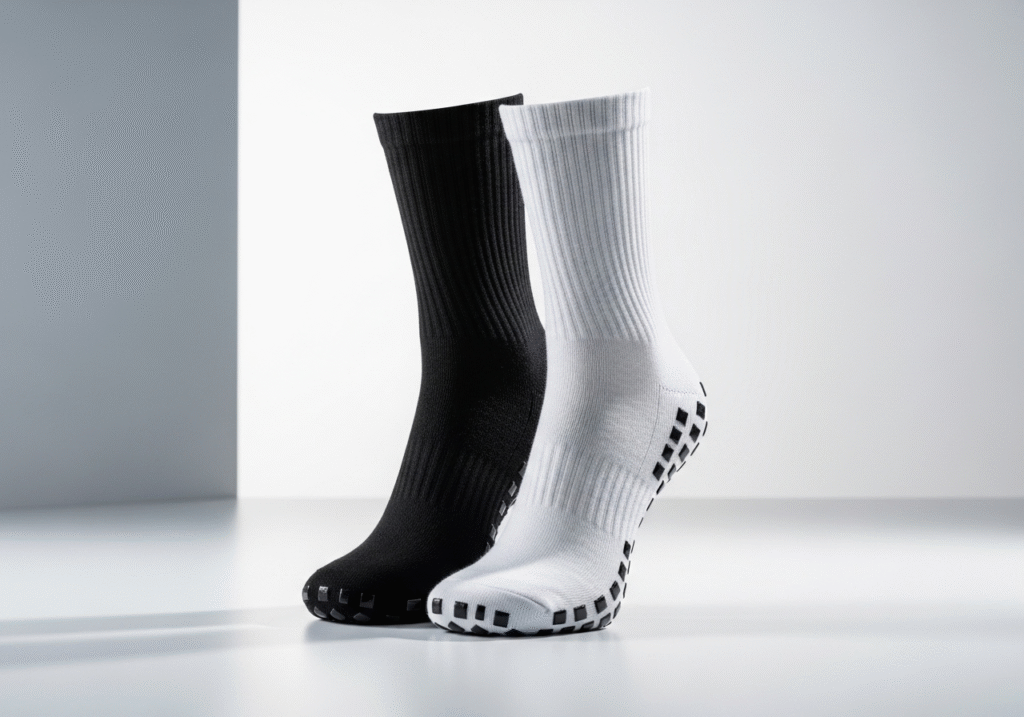
When I talk with a purchasing manager like Matt, we don't just talk about threads and colors. We talk about solving a customer's problem. Regular socks are passive; grip socks are active.
1. They Solve a Universal Problem
From a toddler learning to walk to an elderly person avoiding a fall, slipping is a universal concern. Grip socks offer a simple, effective solution. This applies to yoga enthusiasts, home workout fans, and physical therapy patients. It's a product with a built-in purpose, which makes it much easier to market.
2. They Create a Premium Category
Because they offer a clear functional benefit, grip socks command a higher price point than standard socks. Customers are willing to pay more for a product that enhances their safety and performance. For a retailer, this means better margins and a higher return on shelf space.
| Retail Metric | Regular Socks | Grip Socks |
|---|---|---|
| Customer Problem Solved | Basic coverage | Prevents slips, enhances stability |
| Perceived Value | Low (Commodity) | High (Performance Gear) |
| Target Market | General | Specific, high-intent segments |
| Return on Shelf Space | Lower | Higher |
This shift from a basic good to a piece of gear is what makes them so attractive from a business standpoint.
How to Choose Grip Socks?
Choosing a supplier from a catalog is a gamble. Poor quality means grips that peel off and fabric that shrinks after one wash, leading to angry customers and returns.
Choose grip socks by testing the grip coverage and material (silicone is best), the fabric blend for breathability and durability, and the overall construction, including a deep heel pocket.
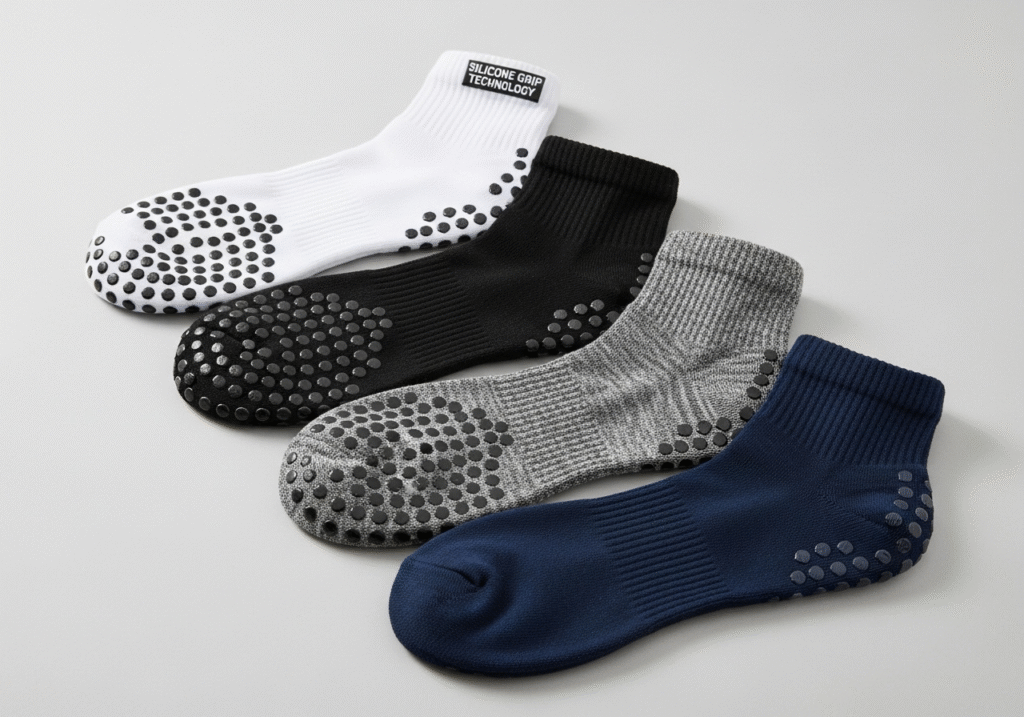
When I send samples to a partner, I encourage them to put the socks through their paces. A good grip sock should stand up to scrutiny. Here's my personal checklist.
1. The Grip Itself
The dots or patterns on the bottom are the star of the show. I always recommend 100% silicone over PVC. Silicone is more durable, has better grip, and is more heat-resistant in the dryer. The pattern matters, too. Dot patterns offer flexibility, while wave or full-sole patterns provide more coverage. The key is that the grips must be securely bonded to the fabric and not peel off after a few washes.
2. Fabric Composition
A cheap fabric will ruin a great grip design. I recommend a blend of cotton for softness, spandex or elastane for stretch and recovery, and nylon or polyester for durability and moisture-wicking. A good blend feels soft, holds its shape, and keeps the foot dry.
3. Sock Construction
Look for features like a seamless toe to prevent irritation, a reinforced heel and toe for longevity, and a specific arch compression band. A deep, well-defined heel pocket is critical—it ensures the sock stays put and doesn't slide down into the shoe.
| Feature Checklist | What to Look For |
|---|---|
| Grip Material | 100% Silicone, wash-tested for peeling |
| Fabric Blend | Cotton/Spandex/Nylon for comfort and durability |
| Heel & Toe | Reinforced stitching, seamless toe closure |
| Arch Support | A snug, elasticated band around the midfoot |
These details separate a premium product from a cheap imitation.
What Are the Limitations of Grip Socks?
Ignoring a product's limits leads to customer disappointment. These issues can damage your brand's reputation. Knowing the downsides helps you market them honestly and effectively.
The main limitations are that grip socks can feel bulky inside tight-fitting shoes, the grips can wear down over time with heavy use, and they are not a one-size-fits-all solution for every activity.
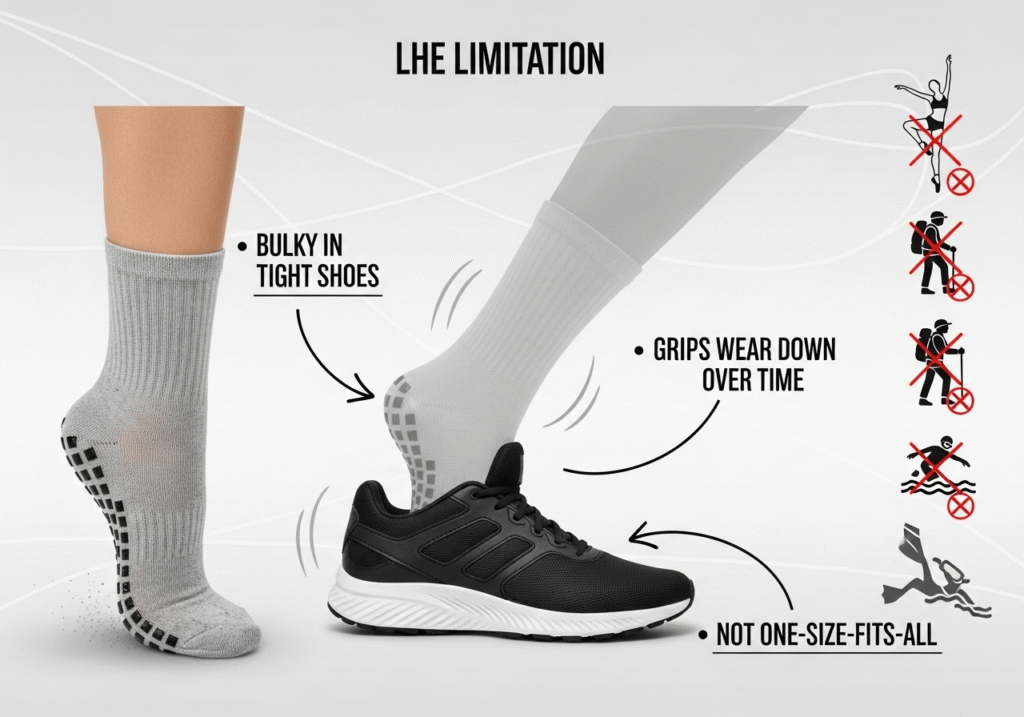
Being honest about a product’s limitations builds trust. I always tell my partners what grip socks can and cannot do.
1. In-Shoe Compatibility
The very feature that makes them great—the grips—also adds a tiny bit of thickness. This means they are not ideal for wearing with snug, high-performance athletic shoes like running spikes or cycling cleats. They work best for studio activities, home use, or in looser-fitting footwear.
2. Lifespan of the Grip
While high-quality silicone is durable, it's not indestructible. After dozens of washes and miles of use, the grips will eventually show wear. High heat from dryers is the number one enemy of grip longevity. It is crucial to manage customer expectations by recommending washing in cold water and air-drying.
3. Activity Specificity
They are designed for activities where static grip is paramount. For sports like basketball or tennis, where the foot needs to slide slightly within the shoe during quick lateral movements, they can sometimes create too much friction.
| Limitation | How to Manage (Retailer's Angle) |
|---|---|
| Shoe Bulkiness | Market for studio, home, or wellness use, not tight shoes |
| Grip Wear & Tear | Provide clear care instructions (cold wash, air dry) |
| Niche Use | Position them for yoga, Pilates, barre, and home safety |
Honesty here prevents returns and builds a more knowledgeable customer base.
Do Professionals Use Grip Socks?
Is this just another wellness trend? Customers are skeptical of fads, and that hesitation can kill a sale. Showing that professionals trust the product provides powerful social proof.
Yes, professionals across many fields use grip socks. Athletes, physical therapists, Pilates instructors, and even hospital staff rely on them for stability, safety, and performance.
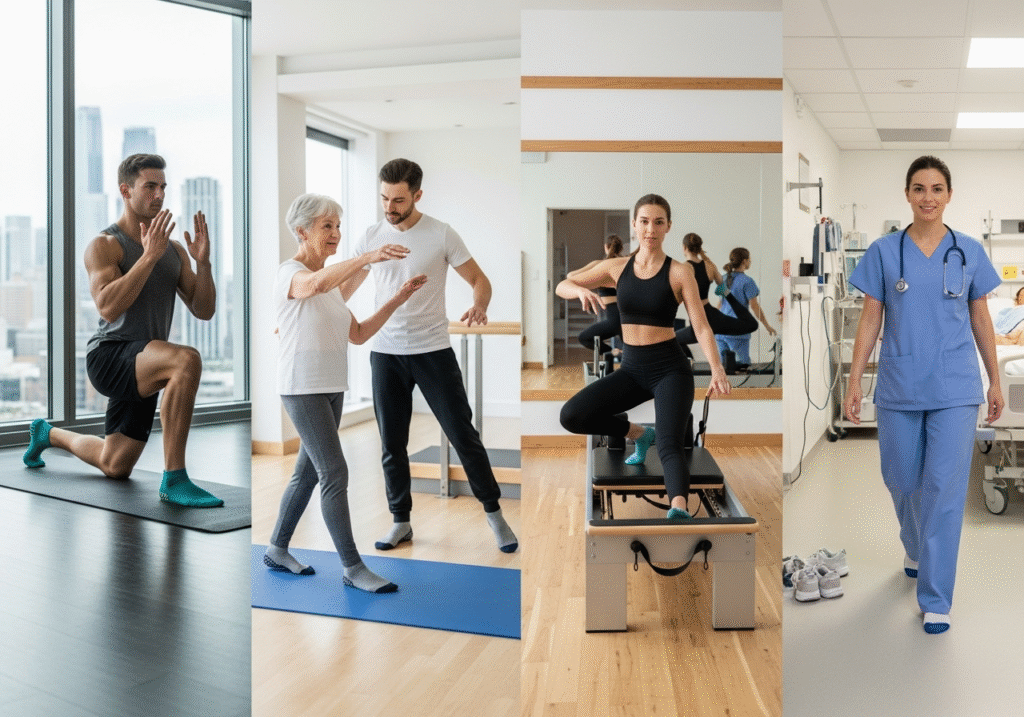
The adoption by professionals is one of the strongest selling points for grip socks. It validates their function and moves them from "nice to have" to "essential gear."
1. In Fitness and Athletics
Pilates, yoga, and barre instructors practically live in grip socks. For them, it’s a non-negotiable piece of equipment for demonstrating moves safely and maintaining balance all day. Many professional athletes also use them during rehab and specific training drills to ensure stable footing1.
2. In Healthcare Settings
This is a massive and important market. Hospitals and elder-care facilities distribute grip socks to patients to prevent falls2, which are a major cause of injury. Physical therapists use them to help patients regain mobility and confidence on slick clinic floors.
3. In Professional Dance
Dancers use them during rehearsals to get the floor feel3 of being barefoot while protecting their skin and getting a little extra traction4 for complex turns and holds.
| Professional Field | Primary Reason for Use |
|---|---|
| Pilates/Yoga | Stability in poses, hygiene on shared mats |
| Physical Therapy | Safe patient mobilization, balance training |
| Hospitals | Fall prevention for at-risk patients |
| Dancers | Controlled traction, skin protection |
When you can tell a customer that the same socks are trusted in hospitals and pro fitness studios, their confidence in the purchase skyrockets.
Conclusion
Choosing socks with durable grips, quality fabric, and smart design is key. This ensures customer satisfaction, builds brand trust, and drives consistent sales in your stores.
Related:
-
Learn about the importance of stable footing in workouts and how grip socks can improve your balance and safety. ↩
-
Learn effective strategies and solutions that hospitals implement to reduce fall risks and improve patient safety. ↩
-
Understanding floor feel is crucial for dancers to enhance their performance and prevent injuries. ↩
-
Exploring the benefits of extra traction can help dancers improve their stability and execution of complex movements. ↩
